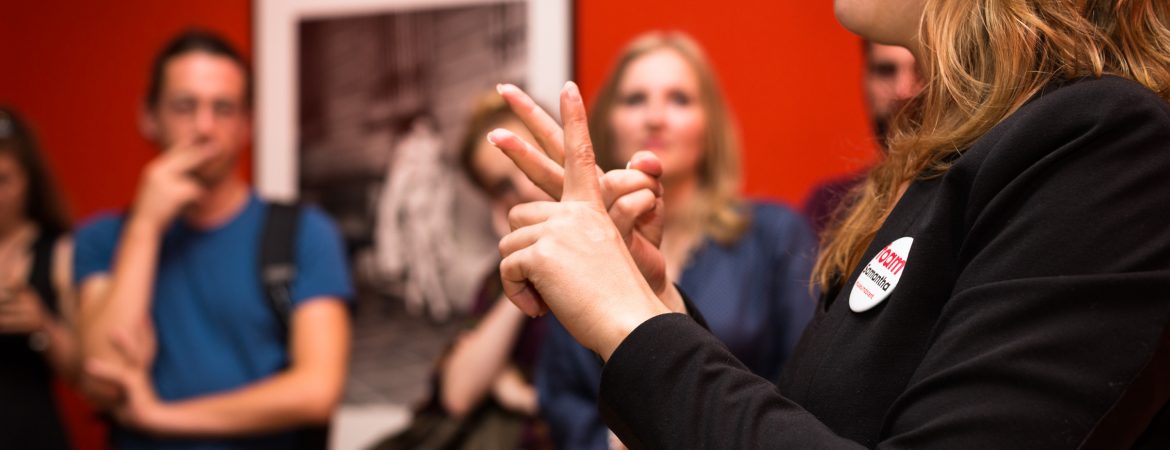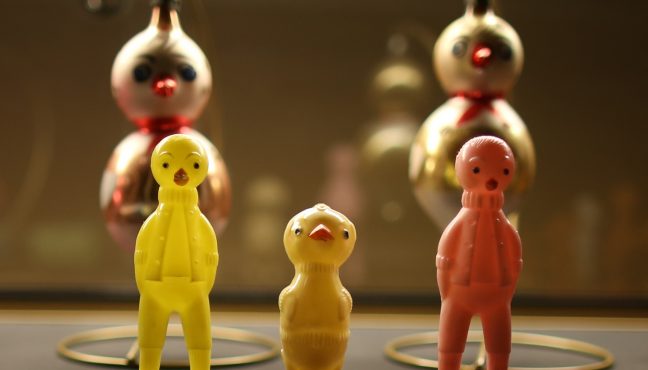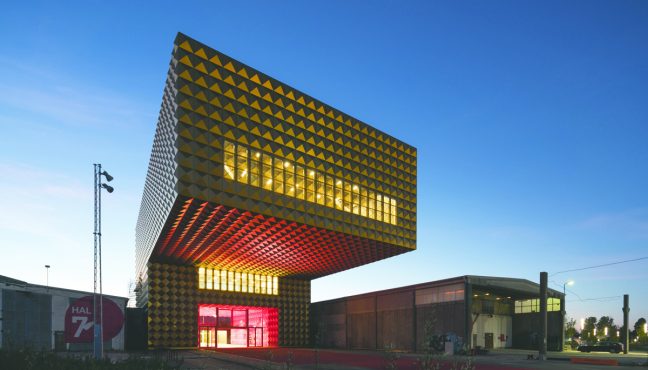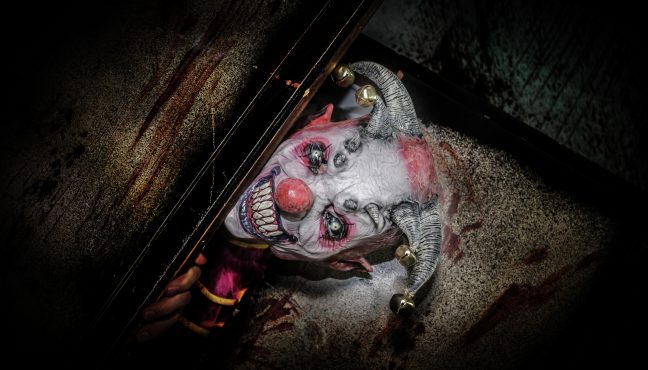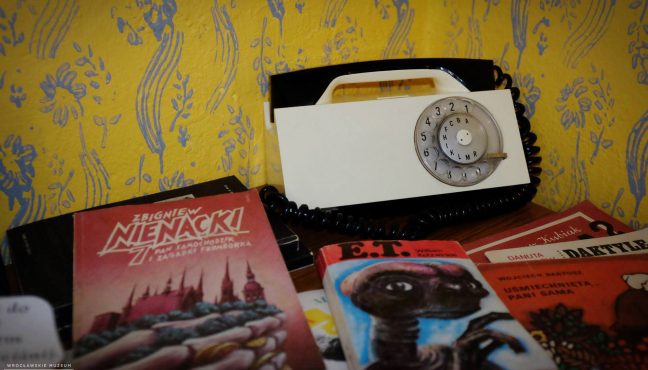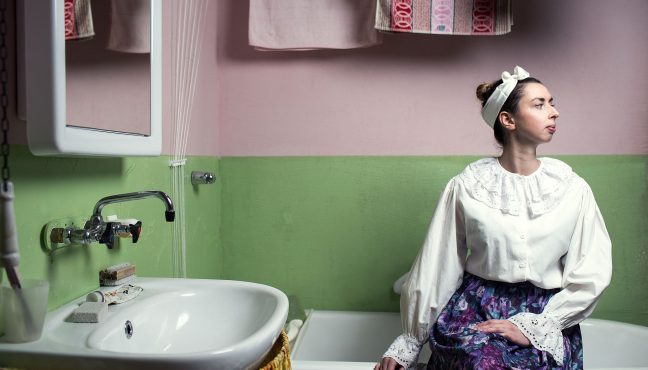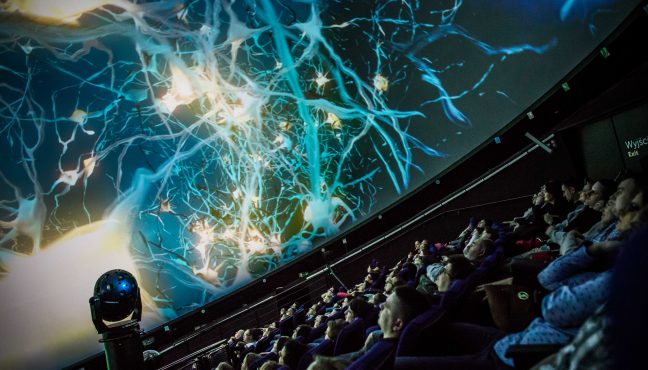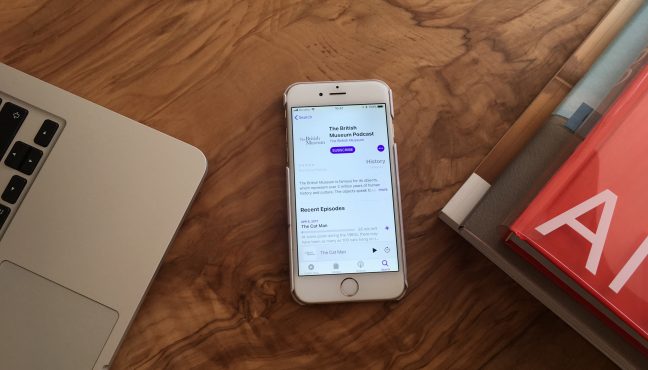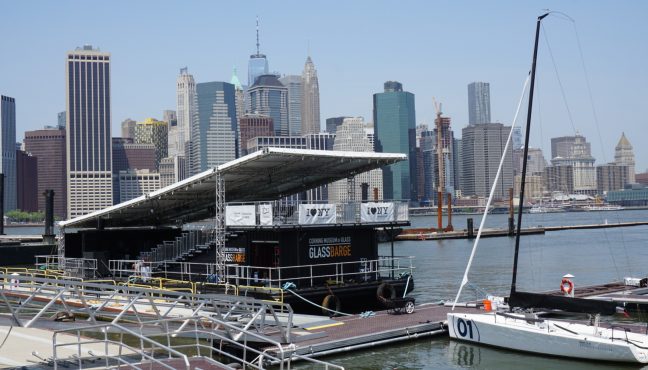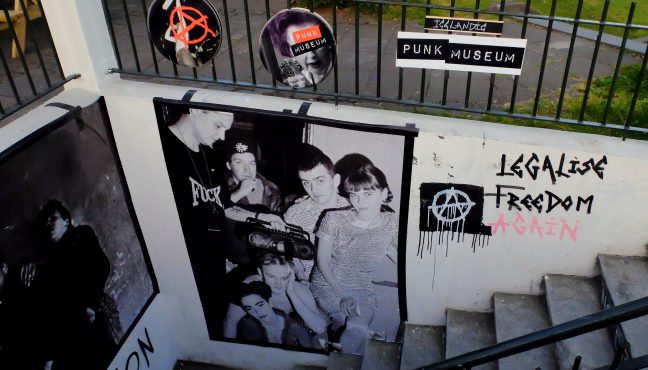Accomplishing accessibility can be a long and time-intensive process. But undeterred, Musea in Gebaren (or Museums in Sign Language) has, since February 2016, endeavored to make art and culture accessible for deaf and hard of hearing museum visitors. Initiated by Foam Fotografiemuseum Amsterdam and Wat Telt!, the project develops museum tours given by deaf museum guides to the deaf community.
Joined by 16 national museums, the project will be expanding its program this year. We talked with the Head of Education at Foam, Maren Siebert, and co-founder of Wat Telt!, Roos Wattel, about their inspiration and experiences during the undertaking.
How did the Museums in Sign Language project start?
Maren: Over ten years ago, Foam started working with deaf guides. We offered the deaf visitors a museum tour once a month. There was no such thing in the Netherlands back then. There were some international examples, and we thought it would be nice to also have a deaf museum guide working in our museum.
Then, two years ago, Wat Telt! and Foam joined forces to promote knowledge about the deaf community among Amsterdam museums and offer a broader range of activities for the deaf public in the city. Together, we made a program, found funding, and introduced the project to different museums. It was also at the time of a new UN convention that forbade organizations to exclude people with disabilities from the experience offered to other people. So, if a museum offers a tour for the hearing people, it should also offer one for the deaf and hard of hearing visitors. That was an extra push for museums to enter the program. They had a responsibility towards this new audience.
Developing such a program independently is an intense undertaking, Wat Telt! and Foam were, however, able to offer museums their existing knowledge, network, and program. So we started working together within the framework of the Museums in Sign Language.

Where did you get the inspiration?
Maren: There was a similar program in London. Several city museums including Tate Modern collaborated on a project to create a more inclusive museum environment in London for deaf and hearing-impaired.
In Europe, there are many cities where museums work well with the deaf community, but not so many cases of museums working together. I think our intense collaboration is pretty special.
Roos: Before we started, programs for the deaf in museums abroad were more advanced compared to the Dutch museums. For example, in Paris or London, they had a free entrance or there were media tours available. The accessibility level was higher.
But now the situation has changed and many countries learn from us. We discovered that what we are doing here in the Netherlands is very unique, exactly because of our ability to work together. We notice that in other cities there is more competition and many museums prefer to work individually.

What is the structure of the training course for the deaf guides?
Roos: It is slightly different each year. In the first edition, we had four theory classes where we talked about how to set up a tour – very basic and simple information. We also taught them translation skills and spoke about diversity in the deaf community, different ways of social interaction, and use of sign language. Four days of the theory were followed by two days of practice at Foam. Afterwards, our guides had training at the museums they chose to work for. And at the end of the course, we had an exam. If you pass, you start a trial period and then depending on the results of your work the collaboration with the museum will continue or stop. After our course, the museum is responsible for the further professional training of the guides.
With the second group, we decided on a different approach. This time we have people from different Dutch provinces. Coming to Amsterdam would require extra time and travel expenses. So we decided to make four days of theory into an online video training. The trainees have two months to finish the course. We also set up a Facebook group with different questionnaires and assignments. Students can prepare them and send back to us for a check. As a side assignment, they also have to observe different tours. With the first group, it was not possible since only Foam had a tour in sign language.

Did you encounter any challenges when developing the training?
Roos: Diversity was one of the big challenges. Within the group of deaf museum guides, we could have someone who is talented in guiding in sign language but finds it difficult to work with Dutch history texts. Or the other way around - someone who is excellent in Dutch and knows history well can have less experience in presenting in sign language. But, of course, we do not want to exclude people. Instead, our goal is to emphasize on everybody’s talent. So, together with the trainees, we tried to identify their strong sides and help to use those in the best way possible.
Another challenge was to explain to museums about the educational and cultural backgrounds of the deaf community. A standard museum guide has to be a university graduate and preferably specialize in history or art history. But in the deaf community, there are not many people with a degree, not yet. Thus, the conditions of entering the program had to be different.
In the beginning, we thought that it could be tough, but in the end, everyone was open-minded and willing to collaborate.
What is the selection criteria for trainees?
Roos: There are not many. First, sign language should be their mother tongue. Second, they should be able to read Dutch. We also want them to have some affinity with history or art history and have some sort of presentation skills.
We focus on participants aged between 18 and 35 who can be role models to our young deaf visitors. But we also have some older participants since many people in the deaf community develop their interest in history or art history only with time due to the challenges in education.

How did you promote this edition of the training?
Maren: We had a video ad with an open call that was done by the guides who already participated in the program, two young people who are well known in the deaf community. We published it on social media channels of Foam and Wat Telt!. We also had one advertisement in Woord en Gebaar, which is the most important deaf magazine that comes out every second month.
What is the outline of the museum tour?
Roos: Since the deaf community is our target group, it is important not to bombard them with information. So we make a selection of facts we want to share. The tour should include five or six components and last for approximately one and a half hours. We also try to make the tours as visual as possible.
Throughout the tour, it is very important to have interaction with a guide. This is the key advantage as compared to having a digital media tour. The deaf community has a disadvantage when it comes to culture and art because usually it is not part of their education. Deaf people don’t often associate themselves with museums. But if there are deaf museum guides, it gives a feeling of being at home. It’s very positive to have live interaction since it creates a better link between museums and deaf communities.
In the future we want deaf people to want to go to museums and know that they are perfectly accessible for the deaf.

Do you ask deaf visitors for their feedback?
Maren: We give out evaluation forms after each tour. There are questions like where did they get information about the tour, how did they experience it, did they understand everything, did they want to come back, and if they were in the or even a museum before.
Is it positive so far?
Maren: Yes, it’s very positive.
Deaf visitors are especially happy about the openness of the people at the front desk. It is very important to train people behind the counter in basic sign language. They are their first point of contact at the museum. Unfortunately, it often happens that when the deaf come into a museum, people at the counter start to panic and do not communicate at all. We train them to be open and welcoming to the deaf community.
What was your initial intention with this project and has it changed?
Maren: Our intention was and still is to make sure that in the end Dutch cultural institutions and museums are open to the deaf community and there is a broader sense of knowledge about the deaf culture. Starting now with 16 museums, in the end, we want to have the practice of working with deaf guides as a standard.
Roos: The goal is still the same. We wanted to introduce museums to deaf and hard of hearing, to provide them with a feeling of trust. And I think we have succeeded in this one. But now we also want to pursue a change in quality. We want to provide more in-depth knowledge to lift up the level of the program. This is also the goal for the deaf community in general. So this is a slow process.

How have your goals evolved during the last couple of years?
Maren: We have created some job opportunities already and this is another long-term goal. One of our deaf guides mentioned that when she was young and went to a museum, there were only hearing guides and a sign-language translator. Now, she is a deaf guide and a role model for the kids who come in. We want to have more children who are open to the fact that they can become an art teacher or work in museums. And museums that are more open to working with the deaf people.
Roos: We also want to make the deaf community more visible to the hearing world. We do not want the deaf to be separate. So when hearing people see the deaf audiences in museums and see the quality and visual richness of the Dutch sign language in the cultural environment, perhaps, they can relate to it too.
Through this project, we aim to bring the worlds and experiences of the hearing and the deaf closer together.

Wat Telt! was founded in 2014 by two deaf sisters Martine and Roos Wattel. Martine has worked as a Deaf museum guide at Foam and Rijksmuseum. Wat Telt! provides accessibility consultancy to the arts and cultural sector and focuses on the inclusion of the deaf and hard of hearing in our society.
Maren Siebert worked as Head of Education at Foam until the end of 2017.
